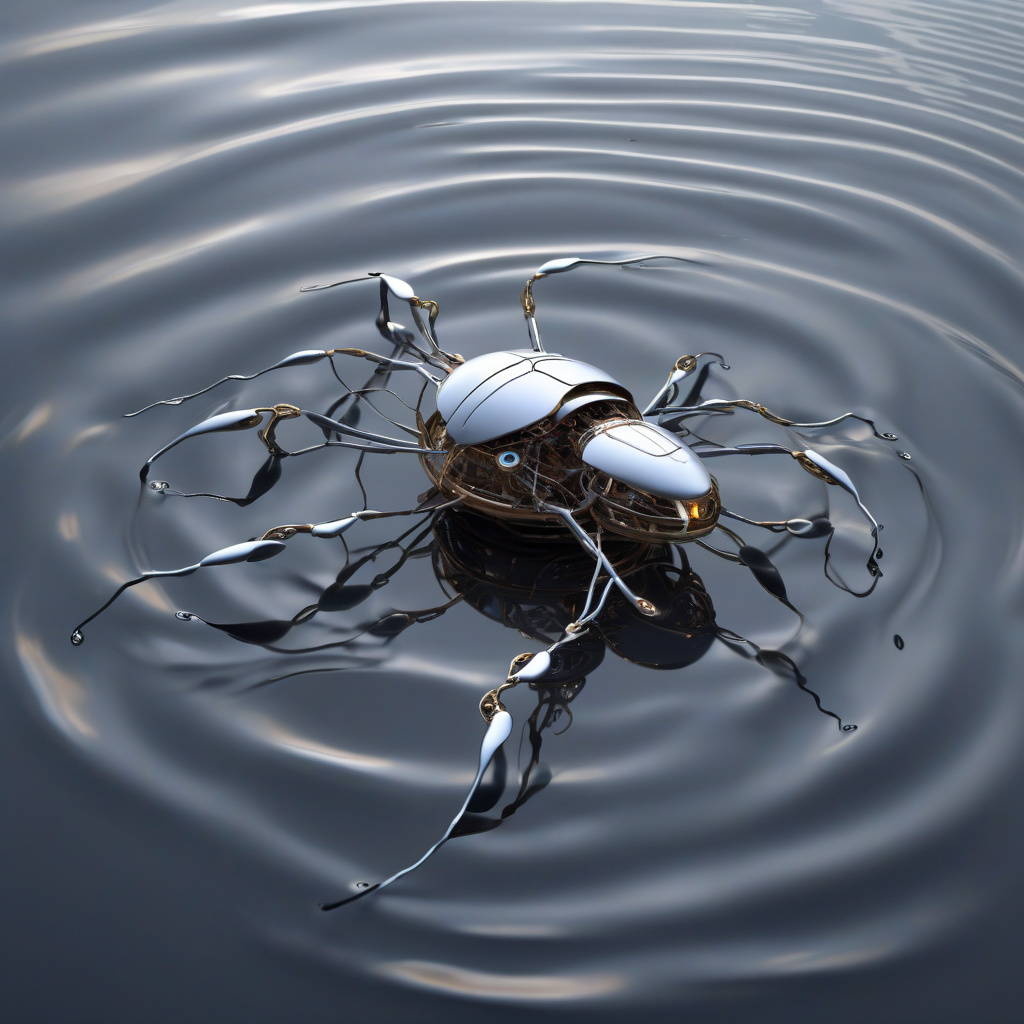Tiny Robot Inspired by Water Striders Skims Across Water with Incredible Speed and Agility
Researchers have discovered the secret behind the incredible speed and agility of Rhagovelia water striders. These fascinating creatures effortlessly skim across the water’s surface using their specialized legs to generate enough lift to support their light bodies, thanks to the small hairs that repel water and create surface tension. Now, scientists have taken inspiration from nature and developed a tiny robot that mimics the water strider’s capabilities.
This innovative robot, known as the AquaSkimmer, showcases the potential for biomimicry in robotics. By studying and replicating the unique adaptations of water striders, researchers have unlocked new possibilities for creating agile and efficient robots that can navigate across water surfaces with ease. The AquaSkimmer is equipped with tiny legs that replicate the water strider’s ability to generate lift and move swiftly across water bodies.
One of the key advantages of the AquaSkimmer is its potential applications in environmental monitoring and surveillance. The robot’s ability to glide across water surfaces without disturbing the environment makes it an ideal tool for collecting data in sensitive ecosystems. From monitoring water quality to studying wildlife in their natural habitats, the AquaSkimmer offers a non-intrusive and efficient solution for various research purposes.
Furthermore, the AquaSkimmer’s design highlights the importance of sustainability in technological innovation. By drawing inspiration from nature, researchers have developed a robot that operates efficiently without relying on fossil fuels or emitting harmful pollutants. This eco-friendly approach not only benefits the environment but also sets a precedent for future robotics development focused on sustainability and minimal environmental impact.
In addition to its practical applications, the AquaSkimmer also serves as a testament to the endless possibilities of bio-inspired design. By studying and emulating the intricate mechanisms found in nature, researchers can create robots that outperform traditional man-made technology in terms of agility, efficiency, and adaptability. The success of the AquaSkimmer underscores the value of interdisciplinary research that combines biology, engineering, and robotics to drive innovation forward.
As technology continues to advance, the field of biomimetic robotics is poised to revolutionize various industries, from environmental science to disaster response. By harnessing the power of nature-inspired design, researchers can unlock new solutions to complex challenges and pave the way for a more sustainable and efficient future. The tiny robot inspired by water striders is just the beginning of what promises to be a transformative journey towards bio-inspired innovation in robotics.
In conclusion, the development of the AquaSkimmer robot showcases the remarkable potential of biomimicry in robotics and underscores the importance of drawing inspiration from nature to drive technological innovation. By mimicking the incredible speed and agility of water striders, researchers have created a robot that can navigate across water surfaces with ease, offering a range of practical applications in environmental monitoring and beyond. As the field of biomimetic robotics continues to evolve, we can expect to see even more groundbreaking developments that blur the line between nature and technology.
water striders, robotics, biomimicry, environmental monitoring, sustainability












